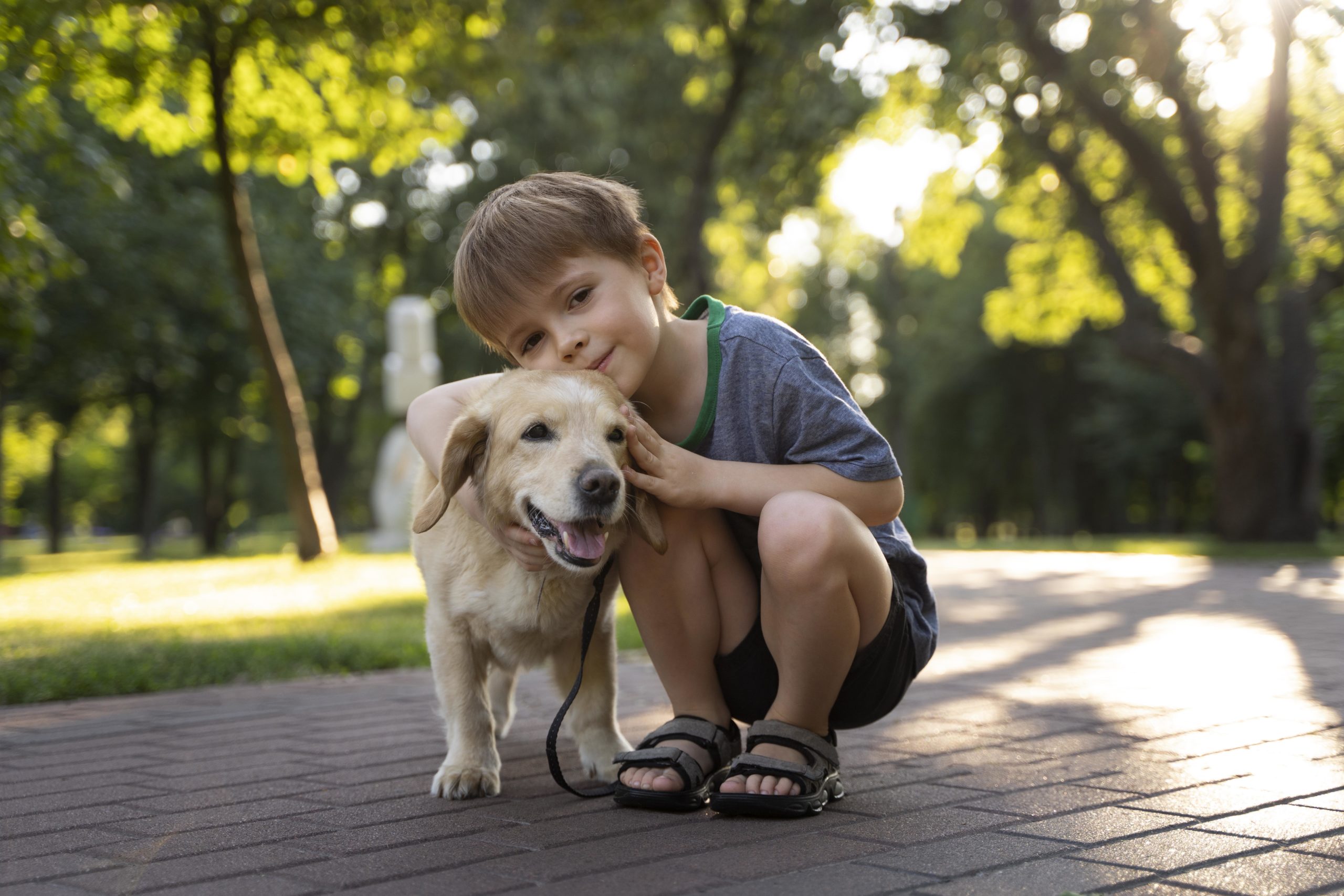Animals have always had a special place in children’s lives. As playmates, sources of curiosity or sources of comfort, they offer a unique presence that is both soothing and stimulating. Unlike human relationships, which are often marked by social or academic expectations, the bond with an animal is simple, direct and non-judgemental. This authenticity creates a safe space where children can express themselves freely, develop their self-confidence and experience positive emotions.
Today, more and more teachers, parents and health professionals recognise the profound impact that the relationship between children and animals can have. Whether it’s a dog that listens attentively to a hesitant reader, a horse that helps channel the energy of an autistic child, or a small rodent that calms a restless class, the examples are numerous and well-documented. The benefits observed are not limited to emotional well-being: they also affect concentration, motivation at school and even physical health, by reducing stress and anxiety.
In this article, we explore the many ways in which animals can become genuine allies in children’s development, based on scientific research and practical experiments carried out in schools and therapeutic settings.
1. Calming effect and stress reduction
While the presence of an animal is often perceived as warm and reassuring, this feeling is not just a matter of intuition or affect. Science now confirms that this special bond between children and animals has measurable effects on the body and mind. In particular, research shows that these interactions reduce stress levels and promote observable physiological calm.
Animal-assisted therapy (AAT) programmes show significant effects on reducing anxiety and stress in children, sometimes measured by physiological markers such as cortisol.
In schools, a 2025 study showed that children taking part in sessions with a dog reduced their salivary cortisol levels, a sign of reduced stress, compared with control groups.
A broader look at the phenomenon is also confirmed by a recent scientific summary: a systematic meta-analysis, published in 2025, looked at dog-assisted interventions with young people and confirmed a positive influence on cortisol regulation, with promising modulatory effects.
Finally, another study, conducted in a hospital setting, emphasised that brief interactions with therapy dogs (5 to 10 minutes) led to significant reductions in salivary cortisol, while improving the mood and activity of hospitalised children.
These physiological effects confirm that the presence of an animal not only acts on affect, but also provides genuine biological support. But appeasement is only the first step: animals also pave the way for richer emotional and social development.
2. Social and emotional development
Animals provide a non-judgemental bond that encourages the expression of emotions and the emergence of empathy. In the classroom, their presence encourages prosocial behaviour and reduces tension.
Research conducted with primary school pupils showed that the presence of animals in the classroom improved social skills and reduced problem behaviour in just eight weeks.
More generally, the Human Animal Bond Research Institute (HABRI) has documented that children who interact regularly with animals develop greater empathy and emotional regulation.
As well as calming and encouraging emotional expression, animals become genuine learning allies.
3. Cognitive stimulation and educational support
Animals do not limit themselves to an emotional role: they can also directly support learning. Dog-assisted reading programmes, in which children read aloud to a dog, show significant progress in reading skills, verbal fluency and self-confidence.
A trial by Hall et al (2016) showed that children who regularly read to dogs improved their reading scores faster than those in control groups. These results can be explained in part by the reduction in performance anxiety: reading in front of a dog creates a non-judgmental atmosphere, which frees the child from the fear of making a mistake.
As well as reading, animals also provide opportunities for experiential learning. Taking care of an animal in class (feeding a fish, cleaning a hamster’s cage, observing a rabbit) reinforces a sense of responsibility, procedural memory and stimulates scientific curiosity. A study by Hergovich et al (2002) showed that the presence of animals in the classroom fostered not only social skills, but also motivation to participate in school activities .
In short, whether we’re talking about reading, the natural sciences or even mathematics (observing, classifying, counting, organising), animals become invaluable educational mediators, capable of making learning more concrete, engaging and accessible.
These benefits are all the more essential when it comes to children with special needs, for whom animals play a recognised therapeutic role.
4. Specific benefits for children with special needs
Animal-assisted therapies are particularly effective for children with autism or neurodevelopmental disorders.
- Assistance dogs: several studies show that they reduce irritability and encourage social interaction.
- Equitherapy: intervention programmes with horses improve emotional regulation, social skills and attention in autistic children.
- Alternative school environments: in Australia, a school has introduced a mini-farm with alpacas, rabbits and chickens to help anxious or autistic children manage their daily lives more effectively. The results are encouraging, with a drop in absenteeism and an improvement in the school climate.
These experiments underline the obvious: the child-animal relationship acts as a catalyst for overall well-being, at the crossroads of the physiological, emotional and cognitive.
Conclusion
Animals appear to be genuine allies in children’s development. They soothe tension, encourage empathy and emotional regulation, stimulate learning and offer invaluable support to the most vulnerable. Their presence, whether at home, in the classroom or in a therapeutic setting, acts as a link between emotional well-being, social skills and academic success.
It’s not just a question of introducing a dog, horse or small rodent into children’s lives, but of recognising that the bond created with an animal is a powerful lever for mental health and personal development. Whether in a family, educational or therapeutic setting, this bond opens the way to an authentic relationship that fosters trust, stimulates curiosity and supports children as they grow.
Ultimately, animals remind us that shared care, attention and affection are at the heart of all learning and lasting well-being.

